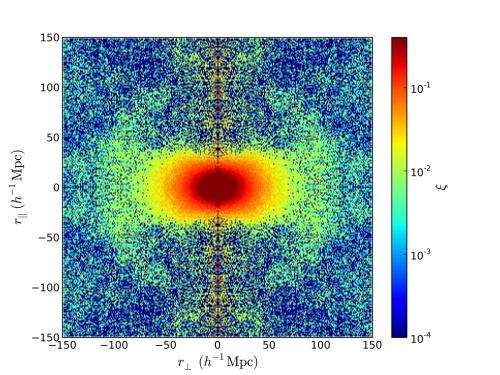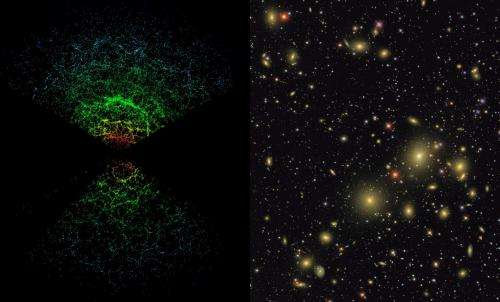Clumped galaxies give General Relativity its toughest test yet

(Phys.org) —Nearly 100 years since Albert Einstein developed general relativity, the theory has passed its toughest test yet in explaining the properties of observable Universe. The most precise measurements to date of the strength of gravitational interactions between distant galaxies show perfect consistency with general relativity's predictions. The results will be presented by Dr Lado Samushia at the National Astronomy Meeting 2014 in Portsmouth on Wednesday 25 June.
Using the observed distortions in galaxy positions, the team were able to measure the strength of gravity with a precision of 6 per cent, the strongest constraint of its kind as yet. The measurements turned out to be perfectly consistent with the predictions of Einstein's general relativity theory.
"Gravity is the main driving force behind the growth of structure in the Universe. According to general relativity, gravity is a manifestation of the space-time curvature – massive objects curve the space-time around them, which affects the movement of other objects around them. It's a very elegant theory that has been successful in explaining the outcomes of many experiments, however it is not the only theory of gravity," explained Samushia. "Theoretical physicists have proposed many alternative theories and modifications of general relativity and the challenge for observational physicists is to test the alternative theories with ever increasing precision."

More information: The research has been published in Samushia et al, "The Clustering of Galaxies in the SDSS-III Baryon Oscillation Spectroscopic Survey (BOSS): measuring growth rate and geometry", Monthly Notices of the Royal Astronomical Societyvol. 439, p. 3504, 2014. A preprint of the paper is available.
Journal information: Monthly Notices of the Royal Astronomical Society
Provided by Royal Astronomical Society



















